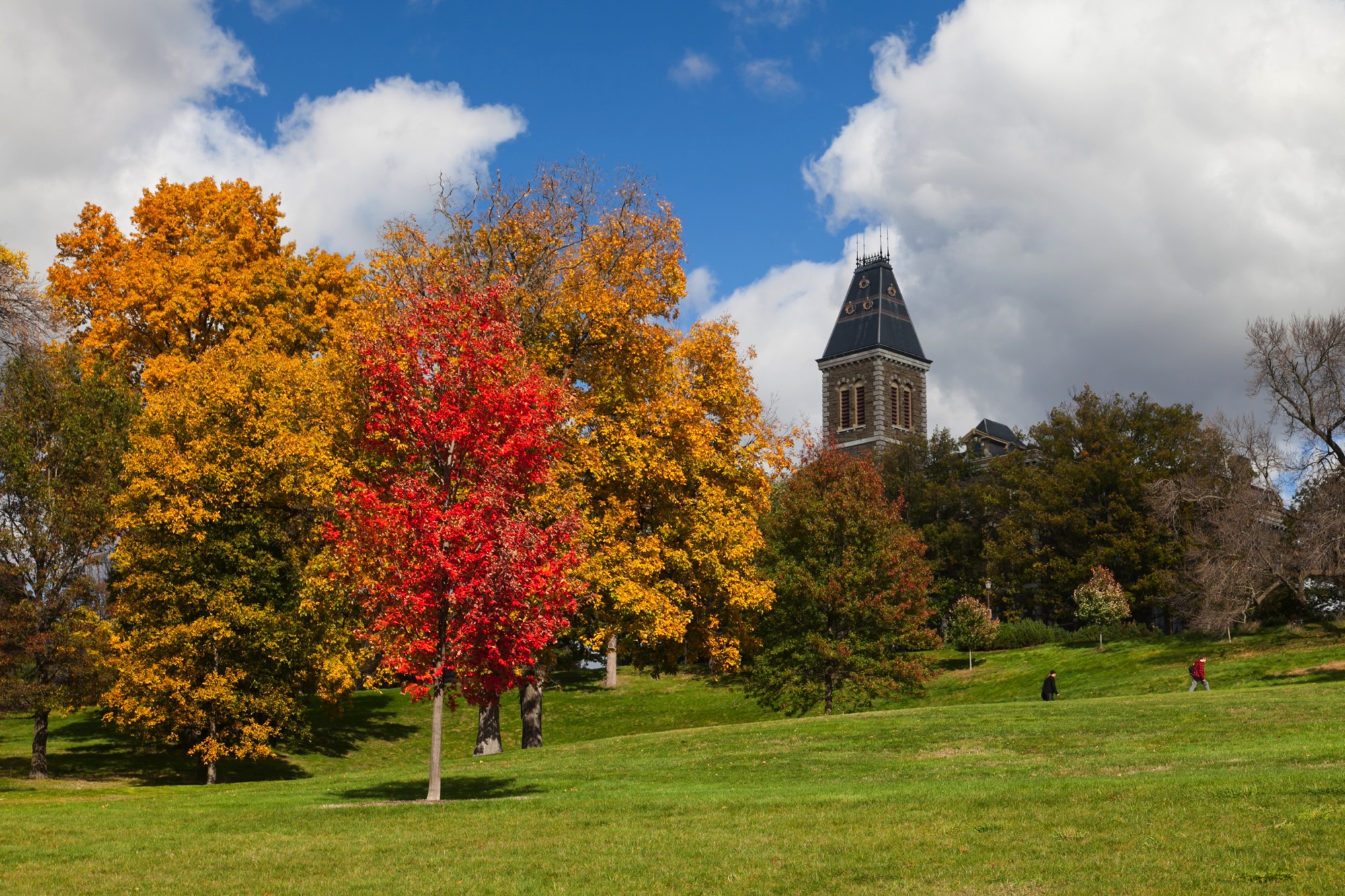Living away from home and going to college can be stressful for anyone, but Asian American students often face culturally related factors–model minority expectations and family pressures, among them–that can affect their mental well-being.
Some studies have shown that Asian American college students may be at increased risk for depression, and college counselors have noted that many are extremely reluctant to seek help. In recent years, though, highly publicized suicides at the Massachusetts Institute of Technology, California Institute of Technology and other universities have created a sense of urgency, prompting some campuses to ask if they’re paying enough attention to the mental health of students from Asian backgrounds.
At Stanford University, the high-profile suicide of a Chinese American graduate engineering student in 2007, along with other less publicized suicides, spurred the campus Asian American Activities Center to survey all students of Asian descent about their mental health.
At Cornell University, a disproportionate number of suicides among students of Asian descent led the university to convene an Asian American task force to explore the problem. From 1996 to 2004, 55 percent of suicides among Cornell students involved students from Asian backgrounds, even though only 14 percent of the student body is Asian.
Suicides are rare, and discussing them poses risks. “There’s a danger of over-pathologizing a whole community,” says Wai-Kwong Wong, a Cornell counselor who co-chaired the task force. But he also remembers the sadness and anger he felt as students took their lives. He recalls thinking, “Why are we ignoring this issue? Why are we pretending that nothing is wrong?”
After the task force report was released in 2004, Cornell made major changes to reach students of Asian descent. Stanford’s Asian American center also used its survey to create culturally sensitive mental health programs. These universities’ findings help shed light on depression and suicide and how campuses can respond.
Model minority pressures
Typecast as high achievers, Asian American college students often report feeling intense pressure to succeed, college officials say.
“There’s an expectation that they are high-achieving academically,” says Cindy Ng, an associate dean and the director of Stanford’s Asian American center. “So when they aren’t meeting that, they’re putting a lot of pressures on themselves and creating a lot of stress, and that also leads to perfectionism.”
Joanna Chen, a 20-year-old Cornell junior, has a strong family history of depression. When she was diagnosed with the illness, she began taking an antidepressant and going through counseling at Cornell’s student health center.
Academic pressures and stereotypes have troubled her since childhood, she says. Of Chinese descent, she had very few Asian peers in her Grand Rapids, Michigan community. By middle school, “I was already facing a lot of stereotypes from my classmates,” she says. They would tell her, “You’re so smart, you’re so good at math,” she says.
Even though these could be called “positive stereotypes,” Chen felt stressed by the expectations. “My earliest memory of doing math was in second grade,” she says. Her father had asked her teacher to give her more challenging work: multiplication tests that none of the other students had received.
“I remember not knowing how to do multiplication, not having done any of that,” Chen says. “I felt like a failure in my gut. It was like a burning sensation, and that’s actually the feeling that I get whenever I don’t finish my assignment on time or I don’t do well on a test. It’s almost paralyzing.”
While academic pressure may start with parents, teachers and classmates, it often travels deep within, says Cornell junior Tommy Li, 20. “You internalize it more than it’s forced on you. My own experience is that by the time I got into high school and now in college, I put that pressure on myself a lot more than my parents pressure me to do that. You believe that you should not get Bs.”
Ryan Macasero, a 24-year-old Filipino American, saw the pressures from a different angle. Macasero, who majored in international studies and political science at California State University, East Bay, recalls feeling deeply depressed and socially anxious in his childhood and teen years. Although he was bright, depression thwarted him from doing well in school. When he couldn’t live up to expectations, others assumed he was lazy or unintelligent. At some point, he says, “I began to believe it, too.”
Family expectations
Chen chose her own major in the humanities, while Li selected the sciences. Other students, though, feel obligated to follow parents’ expectations for certain career paths.
“A lot of them are first-generation college students,” Wong says. “They have this narrative that their families gave up everything to come to this country and worked so hard to give them this opportunity.”
The power of family obligation isn’t always evident to outsiders, he says. “They don’t get how deep that goes, that sense of living up to family expectations, of not letting their parents down. In many ways, it goes to the core of the identity of many of Asian descent because that’s what they’ve grown up with their entire lives. It’s like, ‘our parents are doing this for us and it is our job to repay them by becoming a doctor or an engineer.’ ”
As the Cornell task force report found, the primacy of family in Asian cultures means that for some students, “The parents’ choice or preference supersedes the individual’s wishes.” As a result, the report stated, many students “felt boxed into majors that they did not like or were not well-suited for.”
In counseling, Wong often helps students to clarify reasons for following a particular career path. “I think students need to explore what they think and feel so that they can make that choice,” he says, “because oftentimes, they don’t feel that they have a choice.”
International students
When Stanford’s center conducted its survey, Asian international students reported several problems that affected emotional well-being. Many graduate students needed to focus so intensely on work that they felt deprived of time to build relationships, Ng says. Some also experienced problems with advisers or fellow students.
Besides facing loneliness, homesickness, language barriers and cultural adjustments, some international students arrive on government scholarships to study subjects not of their own choosing, according to Wong. “Keeping the scholarship means that you have to do well in that subject and you can’t change it,” he says. He recalls one distressed young man from Thailand who had been assigned to study civil engineering, a subject that he disliked. “But his family was counting on him,” Wong says, “and everyone in his village knew him.”
Racism and discrimination
Cornell’s Asian American students were the least satisfied of all students with their school experience, in part because some perceived an unwelcoming campus environment, the task force found. Students reported “experiences of bias, both blatant and subtle, often having to do with assumptions around language proficiency or with racist humor or comments by faculty and students,” the report stated. “Many students also expressed a desire for a ‘safe place’ where they could feel comfortable and be themselves without having to be constantly on guard. This sentiment has been echoed by Asian and Asian American students at other schools and institutions as well.”
Model minority stereotype poses a barrier
Some research has shown increased depression among Asian American students. For example, in a 2010 study of undergraduates published in the Journal of Affective Disorders, researchers at the University of California, San Diego found that “compared to Caucasians, Asian Americans exhibited significantly elevated levels of depression.”
Nevertheless, students of Asian descent often avoid asking for help, sometimes delaying until their distress is severe. As the Cornell report stated, students who had internalized the model minority stereotype often felt “shame and a reluctance to seek assistance when confronted with personal or academic difficulties.”
Wong has seen depressed students attempt to cope on their own and spiral into crisis, he says. “They stop going to classes because they’re too embarrassed that they don’t have work to turn in. They stay home, hoping to catch up, which they never do because they’re so depressed. They fall further and further behind. Occasionally, we see students who shut down and basically go into their rooms.”
Usually, such students arrive at the counseling center, he says, “because somebody notices that they haven’t been in class all semester. Or they just become so desperate because they haven’t been in class for a few months.”
Many don’t tell their families about problems, either, Wong says. “They don’t want to let anybody down. They don’t want their family to worry, or they don’t think their family is going to understand,” he says–even though he has watched families rally to a depressed student’s side.
In some cases, though, family problems factor into depression. In 2011, the Journal of College Student Development published a study in which researchers surveyed 1,377 Asian American students on 66 college campuses about risks to their mental health. Students who had contemplated suicide mentioned three top reasons: recent family problems (47 percent); recent academic problems (43 percent); and recent financial problems (24 percent).
Stereotypes also can blind colleges to Asian American students’ struggles, the Cornell report found: “Because of the ‘model minority’ stereotype and its particular potency in a university setting, they are often viewed as not needing support services or programs, both by school officials and the students themselves.”
Talking it over
After the task force findings, Cornell sought to improve mental health awareness and reduce the pervasive stigma that keeps students from seeking help, Wong says. Some Asian American students, such as Chen, speak openly about their depression and treatment. Counseling has taught her to communicate her feelings, she says. “I think I’m getting a lot better at it.”
But some students won’t come to counseling–no matter how much encouragement they receive–because it’s culturally unfamiliar or stigmatizing. To reach them, Cornell developed an innovative “Let’s Talk” program, which Wong coordinates.
“Let’s Talk” doesn’t require students to come to the health center for counseling. Instead, school counselors fan out to nine different campus locations throughout the week—to neutral settings where students congregate, such as academic buildings or a resource center for first-year students. The counselors provide free, informal, confidential consultations on a drop-in basis.
These visits aren’t recorded in students’ official medical records, Wong says. Students may even talk anonymously. While “Let’s Talk” isn’t a formal counseling situation, it can be a gateway to formal counseling at the health center if students want more help or if they need a psychiatric referral for medication, according to Wong.
While international and minority students make up only 30 percent of Cornell’s formal counseling caseload, they account for half of the students who use the “Let’s Talk” program, Wong says. The program’s success has led several other universities to adopt Cornell’s model.
Asian American centers
Fostering a sense of belonging may help protect against depression and suicide, according to the Journal of College Student Development—and that’s important if students feel marginalized on campus.
Some universities have established Asian American centers to provide support and community, and at the task force’s recommendation, Cornell opened an Asian & Asian American Center on campus in 2009.
Assistant dean of students Patricia Nguyen, who directs the center, describes her role as being the “primary advocate for students of Asian descent,” she says. Nguyen organizes cultural events, helps students with academic probation meetings, and becomes involved when bias incidents happen. But she also connects students with mental health resources, sometimes walking them over to the health center to see a counselor and even sitting in on initial counseling sessions if students wish.
Stanford’s Asian American Activities Center traces its beginnings back to the 1970s, Ng says. In recent years, the center has organized discussions on topics, such as stress, depression, social identity and relationships with parents. The center also makes special efforts to support low-income students who are the first in their family to attend college.
Stanford graduate Timmy Lu, the son of ethnic Chinese garment workers who immigrated to Los Angeles from Vietnam, recalls his own jarring transition to the affluent campus. “It can feel difficult, like you’re out of place,” he says. He had never been on vacation, “and it’s really hard to have a conversation with your dorm mates about vacations they’ve taken if you’ve never gone anywhere in your life.”
Recently, Lu, now a 29-year-old community organizer in Oakland, California, returned to Stanford’s center to speak on a panel about parental pressures. His parents’ work struggles had propelled him toward politics and community organizing, but his mother and father didn’t understand those fields and urged him to pursue a more traditional profession, such as law or medicine.
The conflict was painful, but at the Asian American Activities Center, Lu found students and staff who understood his situation–“a social and community element” that helped him to navigate the dilemma, he says.
During the panel discussion, he advised Asian American students to consider their parents’ perspectives. “It was really important for me to understand their refugee experience and to understand where they’re coming from,” he says. “It wasn’t just like an Asian thing–just a stereotype that Asians want their children to be like this–but it comes from somewhere.”
After experiencing political turmoil in Vietnam, his parents worried about his political involvement, he says. As garment workers who had been exploited, they also worried about poverty. “They didn’t want me to work in low-wage jobs. They didn’t want me to require government assistance,” he says.
How did he finally convince his parents? He relied on his experience as an activist. “I organized my parents. I provided compelling reasons for them to support me and really pushed them hard to help them to understand why I’m doing things,” he says. “I think I’ve been generally successful. They’ve really changed over the years.”
The power of peers
For depressed students, peer relationships matter, says Kisuk Ra, 20, a Cornell junior. Ra moved from South Korea to Albany, New York at age 13 and excelled in high school. But at Cornell, where he is a pre-med student, he found himself competing against other stellar students and could no longer count on top grades in every class.
“There’s a big initial shock in encountering that kind of difference. It was really disheartening and made me doubt myself and my abilities and my self-worth,” he says. “I definitely had periods where I didn’t want to be with other people, and I would just stay at home by myself.”
After being diagnosed with depression during freshman year, he found that counseling helped, he says, but “the big transition point for me was Cornell Minds Matter.” When he joined the student organization, which is devoted to mental health advocacy, he found kindred spirits.
“The problem with depression is that you’re stuck to your own feelings and your own thoughts,” he says. After he talked with other students about his depression, he no longer felt alone, he says. “They’ve all been really supportive, and there was no judgment or surprise. It’s a shared struggle.”
For Macasero, years of depression, social anxiety and being bullied made him consider suicide, but he, too, reached a turning point in college. “I got tired of living like that. I needed to stop being afraid of everyone and everything,” he says. He dropped into Cal State East Bay’s counseling center. “They helped me realize that my depression was stopping me from performing well,” he says.
He also began seeking out peers. “I forced myself to go into the Filipino Association and sit in on one of their meetings. People came up and started talking to me,” he says. Encouraged, he joined other campus clubs.
Eventually, he emerged from depression. Now, his former self seems but a shadow, he says. “After I started putting myself out there, I almost forgot that I was that isolated person. It didn’t feel like me anymore. It felt like, ‘This is who I really am, and I don’t know who that person was.’”
Part three of a three-part series on Asian American mental health.



